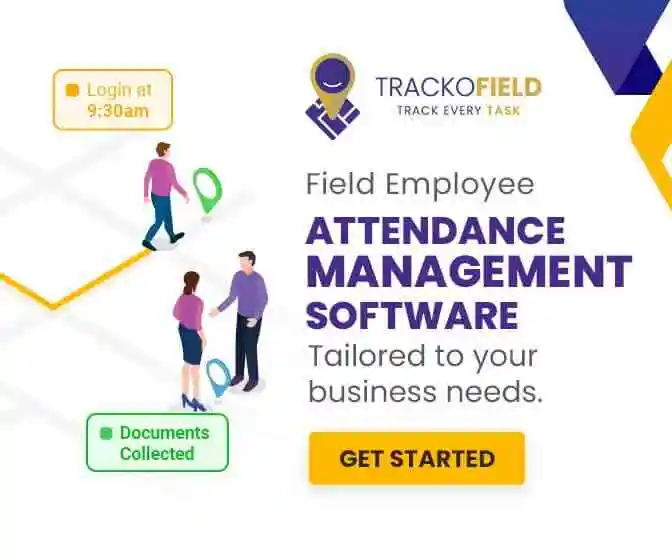-
TrackoBit
Manage commercial vehicles with the new-age Fleet Management Software
TrackoBit -
TrackoField
Streamline your scattered workforce with Field Force Management Software
TrackoField -
Features Resources
-
Blog
Carefully curated articles to update you on industrial trends. -
White Paper
Insightful papers and analysis on essential subject matters. -
Glossary
Explore an alphabetical list of relevant industry terms. -
What’s New
Get TrackoBit & TrackoField monthly updates here. -
Case Study
Explore the cases we solved with our diverse solutions. -
Comparisons
Compare platforms, features, and pricing to find your best fit.
-
About Us
Get to know TrackoBit: our team, ethos, values, and vision. -
Careers
Join the most dynamic cult of coders, creatives and changemakers. -
Tech Support
Learn about our technical support team and services in detail. -
Events
Check out the exhibitions where we left our marks and conquered. -
Contact Us
Connect with us and let us know how we can be of service.
What is Vehicle Tracking Software? Types, Features & How it Works
- Author:Anvesha Pandey
- Read Time:7 min
- Published:
- Last Update: December 8, 2025
Table of Contents
ToggleLooking for a piece that unfolds what vehicle tracking software is? Look nowhere else, this explains the meaning & how it leverages GPS technology for real-time monitoring!
Table of Contents
Toggle
Managing a fleet isn’t easy. With responsibilities like driver’s accountability & maintaining optimal costs – there’s a lot to juggle. You want to streamline operations and reduce stress. Most importantly, you want to maintain control over your without feeling overwhelmed.
This is where GPS vehicle tracking software come in. They do more than just show you where your vehicles are. They can transform how you manage daily transportation tasks.
This blog explains what a vehicle tracking software is. The further parts of this piece can help your business become more efficient.
Let’s start!
What is Vehicle Tracking Software? (DEFINITION)
Vehicle tracking software is a vital tool for businesses & individuals. It allows real-time monitoring of vehicle movements using the GPS technology. The system provides you with precise locational data. It also includes information on speed, direction & other relevant metrics.
Vehicle tracking software serves as a centralized platform that not only tracks vehicles. It also enhances operational efficiency with features like route planning, theft prevention etc.
| 📌Let’s look at the key components before we get into the system’s functionalities!
-GPS Tracking Devices Electronic tools are installed to determine and transmit the location. – GNSS Network Provides you with electromagnetic signals that help GPS devices determine the vehicular locations. – GSM Network Its a standard for mobile networks that enables the transmission of locational data. This locational data – A Server- A centralized system that processes & stores the data received from the tracking devices. – Fleet Management Software – A central SaaS platform that displays real-time location data. This is done through a user-friendly interface with digital maps. |
Now that you know the meaning & the basic components of the vehicle tracking software. Let’s just dive into the workings of the software.
How Does a Vehicle Tracking Software Function?
How Vehicle Tracking Software Functions
Vehicle tracking software functions by using a combination of hardware & software. They work together to transmit & display & vehicle-related data in real time.
Here’s how it works, step by step-
STEP 1- GPS Tracking Devices Installation
The very first step involves installing GPS tracking devices. GPS tracking devices are small, compact devices. They are responsible for collecting & transmitting locational data continuously.
So, what happens is the devices use satellites to find out exactly where the location. This exactly works like how your phone uses GPS to pinpoint your location.
STEP 2- GNSS Network for Locational Detection
The GPS devices rely on a GNSS network. These networks emit electromagnetic signals to establish locational information.
Curious how it works? Here’s a quick breakdown:
The GNSS network consists of satellites orbiting Earth. They further transmit signals that GPS receivers in the tracking devices can interpret. The GPS devices use these signals to calculate the vehicle’s position. It is based on the time it took the signal to travel from each.
Read Blog – How Does GPS Tracking Software Work?
STEP 3- GSM Network to Share the Data
After determining the vehicle’s location, the GPS device uses the GSM network. This network transmits the data to a paired server for further processing. The locational data is now sent to a central server through mobile communication. This ensures a reliable flow of information between the vehicle & the tracking platform.
STEP 4- Data Transmission to the Server
Once this data is shared or transmitted, it is received by a cloud-based or central server. This is where the data is stored & processed. The server decodes the raw signals & converts them into actionable data. This data can include speed, direction & location. With the help of a fleet management system, all this information is used for further analysis.
STEP 5- Processing the Data with Fleet Management Software
Now, it’s time for data processing. The processed data is integrated into a fleet management software platform. The fleet management software is responsible for analyzing & visualizing the information.
This software combines location data with additional metrics. These metrics include fuel consumption, driver behavior, and more.
Generally, it helps identify anomalies such as unauthorized stops or route deviations. It also helps organize the information into dashboards, alerts & reports.
STEP 6- Displaying Data to the User
Finally, it’s time to display fleet data. The data is displayed to users via a web dashboard & mobile applications.
Fleet managers can monitor real-time vehicle locations and review historical trip data. They can also receive alerts for events like harsh braking, or geofence breaches.
This user-friendly interface ensures efficient fleet management and decision-making.
💡Concisely, the entire process of vehicle tracking systems ensures real-time tracking & efficiency. Resulting in optimized operations, improved efficiency & enhanced the overall fleet performance.
Types of Vehicle Tracking Software
Multiple forms of vehicle tracking software help businesses and individuals
1. Basic GPS Tracking Software
This type of software uses GPS technology to provide real-time tracking of vehicles. It is straightforward & often used for personal vehicles or small fleets. Further allowing users to monitor the location & movement of their vehicles easily.
2. White Label GPS Vehicle Tracking Software
The dashboard of White Label GPS Vehicle Tracking Software
White-label solutions allow businesses to rebrand & customize vehicle tracking software as their own. This is beneficial for businesses looking to offer vehicle tracking services.
It allows them to do so without developing software from scratch. Further providing flexibility in features & branding.
3. Mobile Fleet Tracking Apps
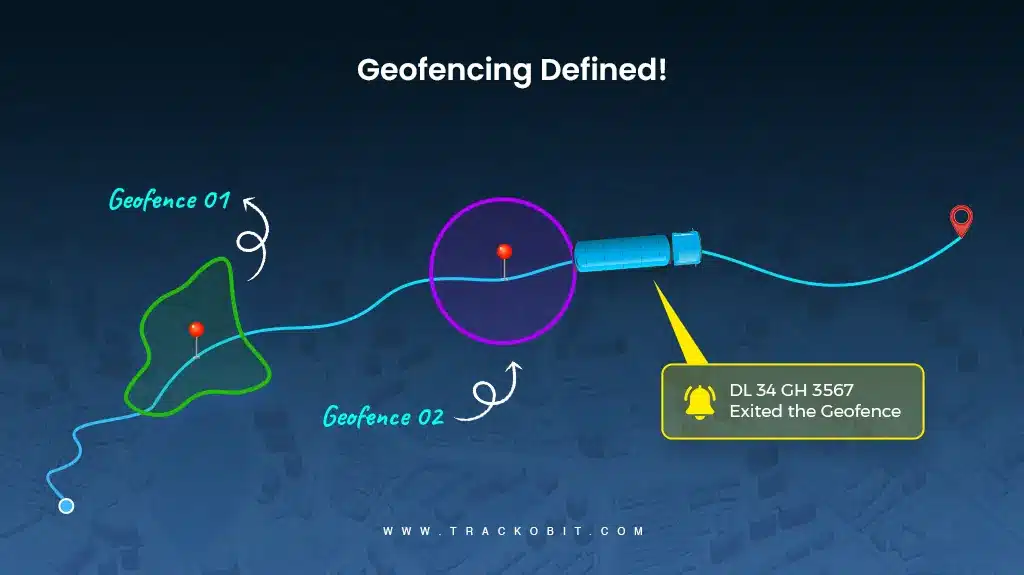
Geofencing Defined
Mobile fleet tracking apps allow users to track vehicles through their smartphones. They offer features like real-time vehicle location updates, route history & geofencing alerts. These apps are ideal for fleet managers especially the ones who need to monitor vehicles on the go.
4. Personal Vehicle Tracking Software
Personal Vehicle Tracking Software
Specially designed for individuals, this software provides tracking capabilities for personal vehicles. It often includes features such as theft recovery driver behavior analysis & maintenance reminders. This further helps in catering to personal safety & management needs.
5. Enterprise Vehicle Fleet Tracking Software
This comprehensive solution is designed for large organizations with extensive fleets. It includes advanced features like detailed reporting, driver performance analytics, & compliance management. They further help enterprises optimize their fleet operations efficiently.
Read Blog – 4 Common GPS Tracking Types, Features & Workings
Do You Really Need a Vehicle Tracking System? Benefits Unfolded
-
Better Route Planning
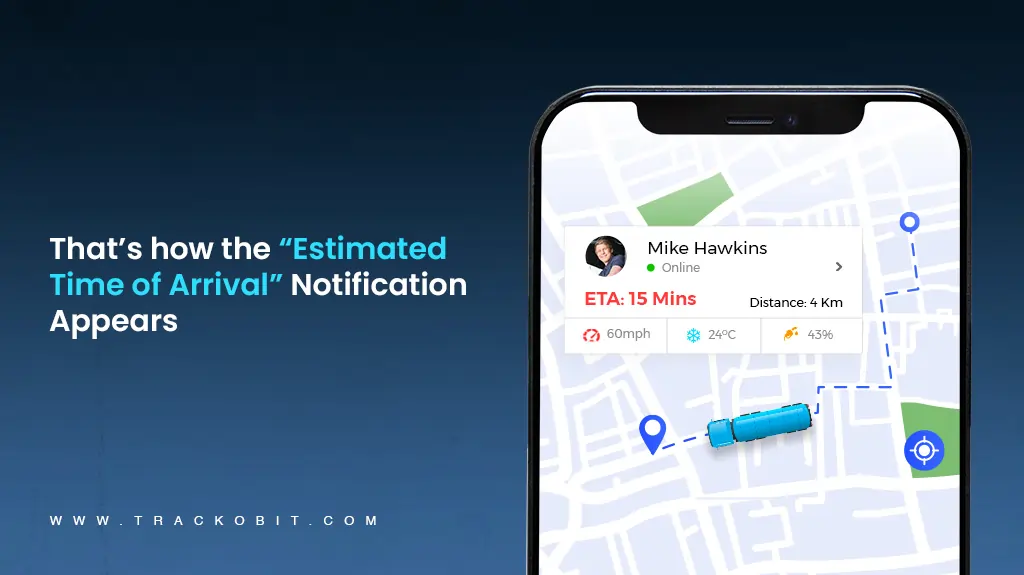
Glimpse of the ETA notifications!
We all know that route planning is time-consuming, but it’s a game changer. GPS tracking systems help you plan, create & monitor routes for multiple trips. Additionally, you can also save routes after accessing the current routes.
The software goes beyond mere route planning. With features like route deviation alerts, ETAs & PODs, businesses can ensure timely deliveries. Additionally, trip-wise expense tracking helps maintain budget compliance & operational efficiency.
-
Regaining Control with Actionable Insights
In fleet management, actionable insights are crucial for better decision-making. The system collects, processes & organizes data into easy-to-understand reports over an analytical dashboard. In fact, you can track performance, fuel consumption & route efficiency.
This prevents unnecessary expenses & helps maintain budget compliance. It also allows managers to intervene immediately in cases of delays.
-
The Power of Min-to-Min Vehicle Visibility
Imagine knowing exactly where your vehicles are at any given moment. A GPS tracking system provides you, uninterrupted real-time visibility of your fleet’s location
This constant visibility fosters accountability & transparency within the team. It also boosts customer satisfaction by providing accurate delivery estimates.
-
Driver Behavior Monitoring
Drivers are the backbone of any fleet. Their habits impact operating costs and safety. Vehicle tracking systems monitor driver behavior, including harsh braking, rapid acceleration etc.
Addressing these issues helps reduce accident rates. It also extends vehicle lifespans and improves fuel efficiency.
What’s Next – The Future of Vehicle Tracking Software?
Vehicle tracking software has evolved far beyond vehicle location monitoring, Now a game-changer for fleets! And with continuous advancements, its future looks even more promising.
Here’s a closer look at the advancements shaping this technology-
1. Predictive Analytics & AI Integration
The future of vehicle tracking lies in harnessing predictive analytics & AI. Especially to process real-time data & make accurate forecasts. These systems will predict maintenance needs by analyzing data from vehicle sensors. Further helping fleet managers prevent costly breakdowns.
For instance, a logistics company will use predictive tracking. This will help identify early signs of engine wear. They can then schedule maintenance in advance.
Additionally, incorporating AI will improve route optimization. It will consider real-time variables like traffic congestion, weather conditions, and road closures.
💡 Companies like FedEx have already adopted predictive tools to optimize operations.
2. Autonomous Vehicle Integration
As self-driving vehicles become more common, vehicle tracking software will be essential. They will improve safety. They will also enhance efficiency in transportation.
They will be essential for ensuring safety and efficiency in transportation.
Especially in monitoring & managing these fleets. Tracking solutions will ensure the safety of autonomous vehicles. It provides real-time performance updates and alerts fleet managers in case of abnormalities.
For example- Tesla uses GPS & advanced driver assistance systems (ADAS). The technology ensures its autonomous vehicles operate safely.
Also, vehicle tracking enables efficient coordination by assigning rides & monitoring driver activity. This is especially useful for ride-sharing services & public transport.
3. IoT- powered Smart Fleet Management
Up next, is IoT. Undeniably, the Internet of Things has been one of the most wonderful inventions ever. IoT has already revolutionized vehicle tracking. It enables vehicles to communicate with infrastructure & other connected devices.
Soon, IoT is expected to play an even larger role in fleet management. Vehicles will communicate with traffic signals, road signs & other vehicles. Further, leading to smoother traffic flow & fewer accidents.
This level of connectivity is known as Vehicle-to-Everything (V2X) communication. It makes fleets more adaptive and responsive to real-time conditions.
💡DHL, for instance, employs IoT-based tracking solutions to monitor cold chain logistics. This is ensuring temperature-sensitive shipments are delivered under optimal conditions
4. Advanced Video Telematics
The combination of video telematics solutions and GPS tracking has enhanced fleet safety. This integration has already taken fleet management to the next level.
The system can monitor driver behavior on a more granular level. It will scrutinize data to identify when the driver is drowsy, or on the cusp of losing the control.
In a given scenario, fleet managers can use these insights. They can implement targeted training programs. Additionally, video telematics enhances accountability during accidents.
Companies like TrackoBit lead in future-driven vehicle tracking software. Their solutions provide real-time insights into fleet operations.
This helps predict events that could risk vehicle health and driver safety.
Don’t just track the vehicle’s location & routes. In fact, get visual surveillance on the driven fleet and operating drivers’ habits too.
Only with Video Telematics Software
Try TrackoBit Today!
How to Choose the Right Vehicle Tracking Software?
Getting your hands on the right vehicle tracking can be quite a daunting task. Below here we have provided a checklist that simplifies the process-
Quick Checklist for Vehicle Tracking Software
✔️ Define Your Business Needs
Identify what you want to achieve (e.g., safety, cost reduction).
✔️ Essential Features
Look for video telematics, fuel monitoring, and driver behavior tracking.
✔️ Scalability
Ensure the software can grow with your fleet size and delivery routes.
✔️ User-Friendly Interface
Choose software that is easy to navigate with customizable reporting.
✔️ Data Security
Focus on systems with 98.9% accurate data transmission & strong security measures.
✔️ Cost Comparison
Compare costs, check for hidden fees, and evaluate ROI potential.
✔️ Trials & Testimonials
Use trial periods and review real-world case studies to assess effectiveness.
Once the software passes the checklist, you have the best, value-for-money vehicle tracking software. With the right solution in place, you can improve efficiency & ensure your business.
Want to see it in action?
If you have a small fleet and need basic tracking. You can try Navilap—a simple yet powerful vehicle-tracking solution from TrackoBit.
For large fleets with complex routes, choose TrackoBit’s full suite. Get advanced video telematics, route planning, and driver behavior monitoring to streamline operations.
Optimize your fleet today!
Frequently Asked Questions for Vehicle Tracking Software
-
How do vehicle tracking systems support enterprise companies?
The benefits of vehicle tracking software for enterprises are many. Vehicle tracking systems help them through: 1. Maintaining complete visibility 2. Improving customer service Increasing fleet safety Actionable reports Features like real-time tracking and geofencing play a huge role in actualising these benefits.
-
What is the difference between GPS and GPRS?
For any vehicle tracking software to function at its full capacity, it needs these two integral components: 1. GPS (Global Positioning System) 2. GPRS (General Packet Radio Service) The difference between the two is that GPS retrieves the precise location coordinates of vehicles while GPRS enables the transmission of data over mobile networks. GPS focuses on positioning and navigation, whereas GPRS allows for real-time communication and data transfer.
-
Why choose Navilap for vehicle tracking services?
NaviLap stands out among vehicle tracking software companies for its user-friendly interface and exceptional customer support. With real-time tracking historical route playback, and alerts and reporting, NaviLap empowers businesses to streamline operations, and cut operational costs. The mobile app access makes fleet management more accessible on all levels.
Anvesha is a communication specialist at TrackoBit. With a strong background in media and communications, she adds much-needed balance and brevity to TrackoBit’s... Read More
Related Blogs
-
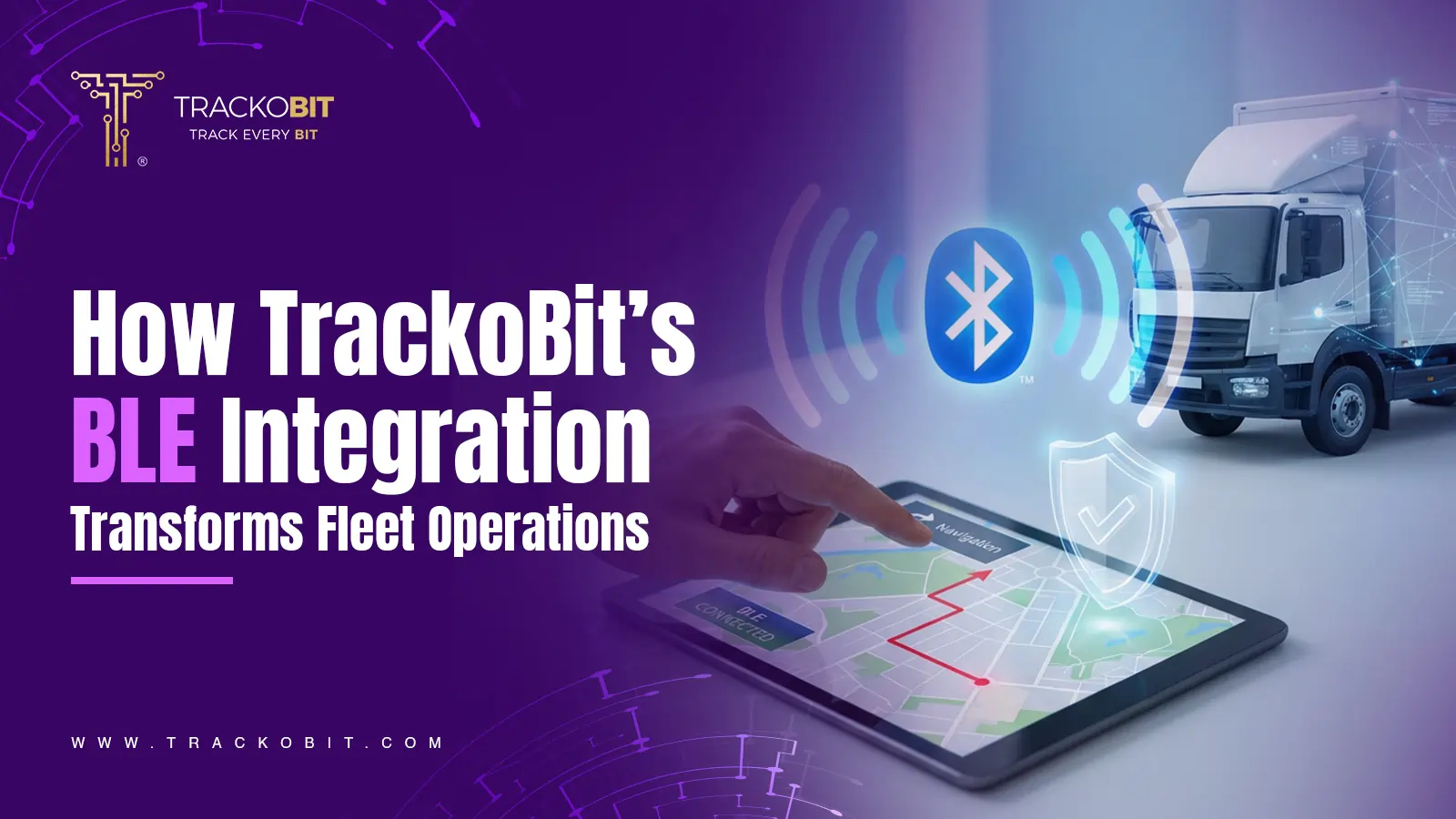
Plug, Pair, Perform TrackoBit Introduces BLE Sensor Integration
Tithi Agarwal November 26, 2025TrackoBit’s BLE Sensor Integration enables wireless, real-time monitoring with faster installs and accurate insights. It improves fleet efficiency, visibility, and…
-
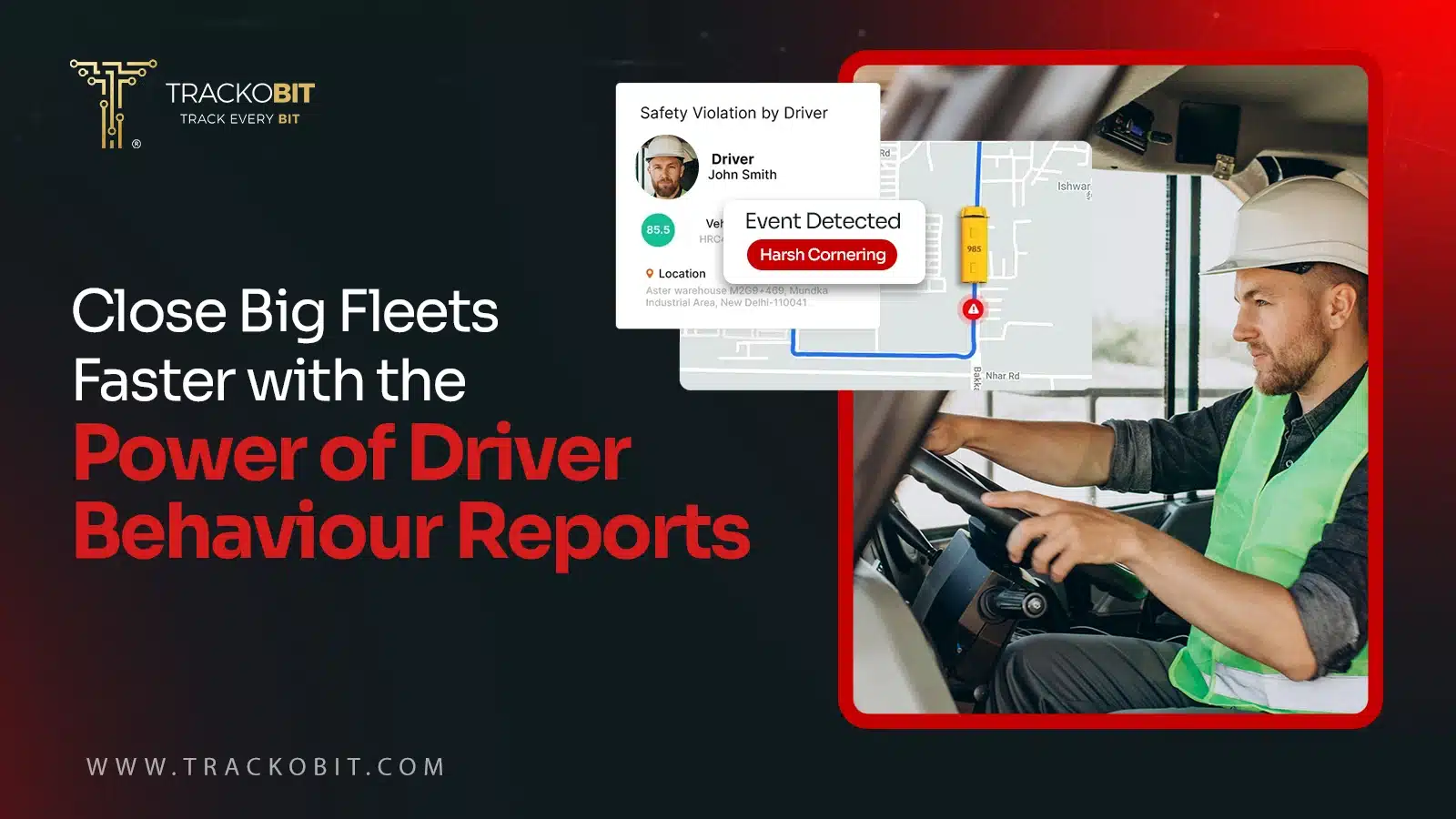
How to Use Driver Behavior Reports as a Sales Hook to Close Big Fleets
Tithi Agarwal October 16, 2025TrackoBit’s driver behavior reports empower fleet providers to win big contracts by showcasing safety, efficiency, and measurable ROI.
-
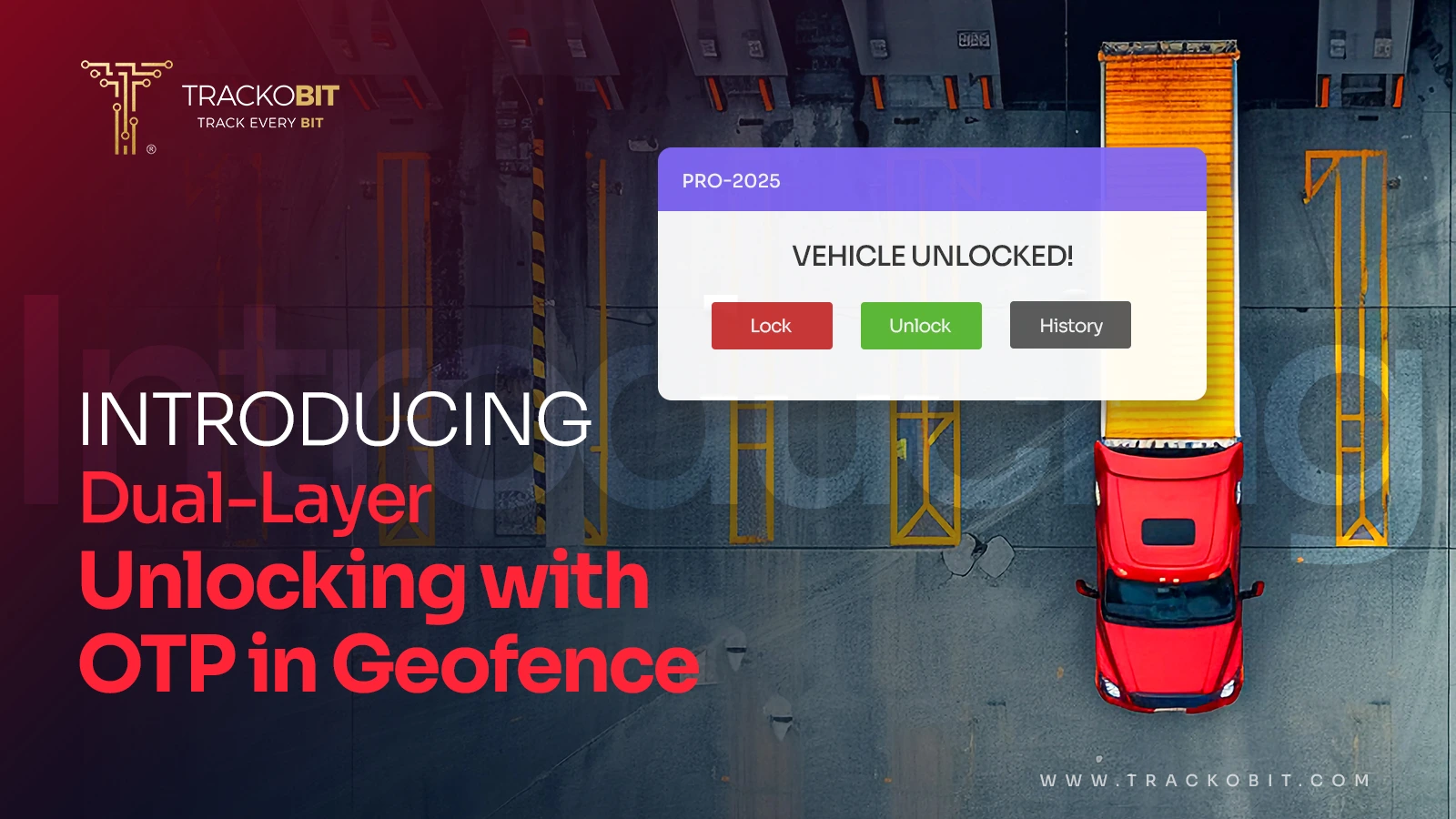
TrackoBit’s Unlocking in Geofence with OTP: Elevating Cargo Protection
Tithi Agarwal September 16, 2025TrackoBit’s latest feature – Unlocking in Geofence with OTP lets you lock out theft and unlock cargo only at the…
-
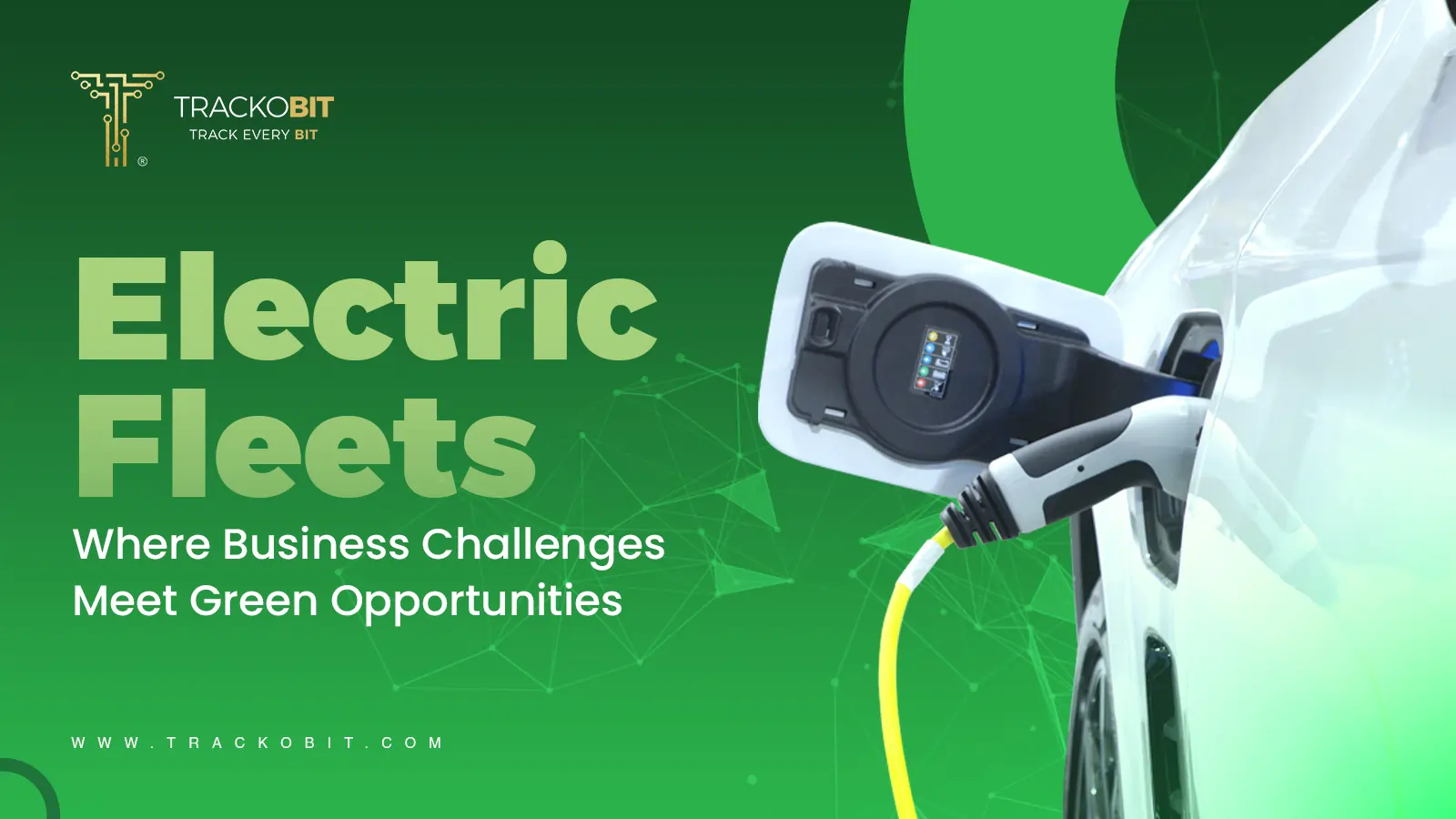
The Rise of Electric Fleets: Challenges and Opportunities for Businesses
Tithi Agarwal September 4, 2025The global fleet landscape is poised for a decade-long transformation. This change is being powered by electricity. Logistics-led businesses are…

Subscribe for weekly tips to optimize your fleet’s potential!
Your inbox awaits a welcome email. Stay tuned for the latest blog updates & expert insights.
"While you're here, dive into some more reads or grab quick bites from our social platforms!"Stay Updated on tech, telematics and mobility. Don't miss out on the latest in the industry.
We use cookies to enhance and personalize your browsing experience. By continuing to use our website, you agree to our Privacy Policy.



































